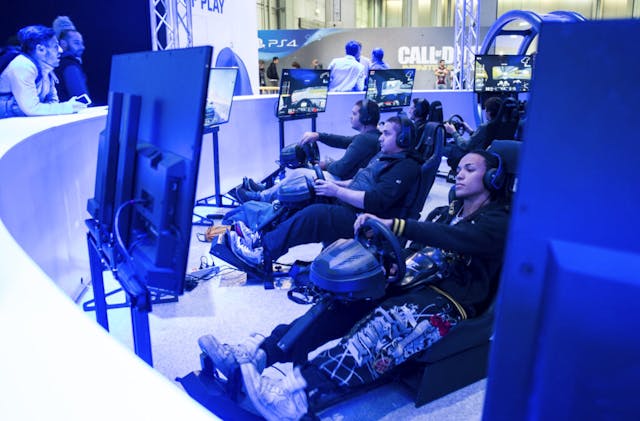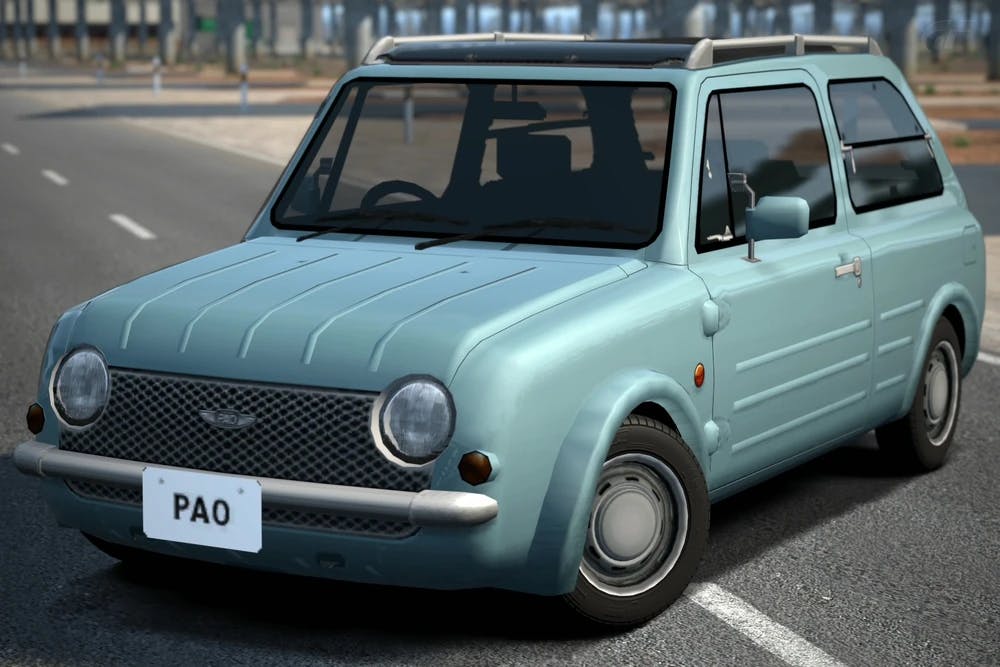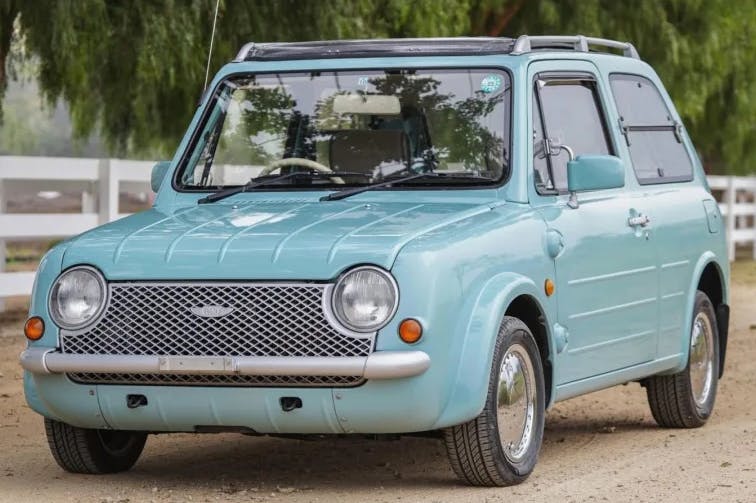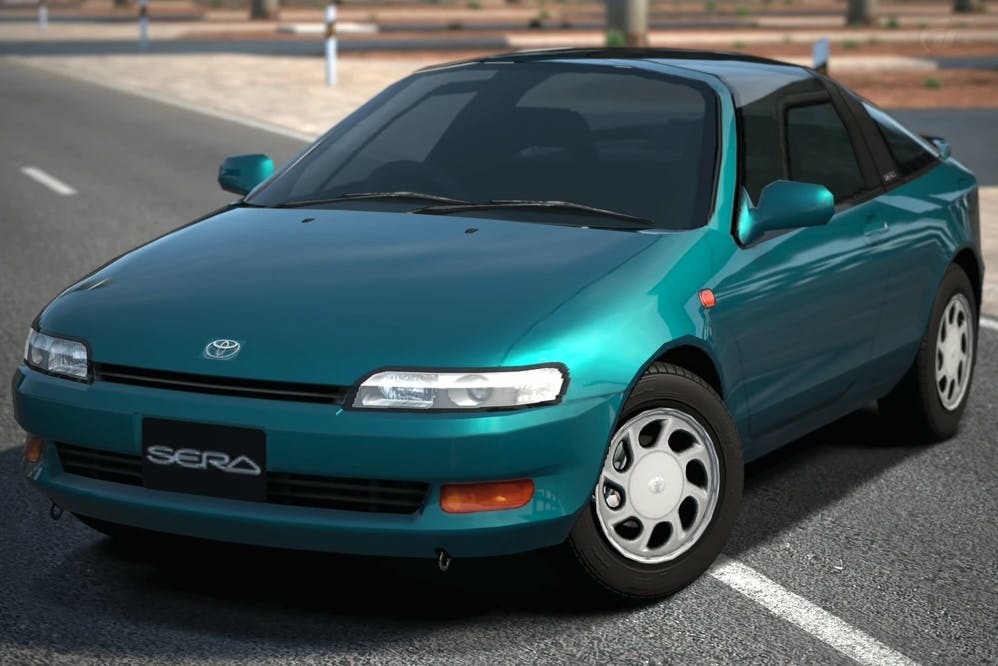Auto Anthro: How Gran Turismo created a generation of gearheads
Jack Swansey holds a degree in anthropology with a focus on car culture, and he is the world’s leading ethnographic authority (by default, if you must know) on NASCAR fandom. His love of the automobile fuels him to discover what cars mean to the people who own, drive, and love them. —EW
“What got you into cars?”
It’s a question I’m asked a lot. Unable to translate into a suitably small-talk-sized answer my decades of passion and fascination with speed, history, and engineering, I usually say, “I don’t really know, I just am.”
But if you were to corner me at a party and press me on the best way for a person to get interested in automobiles, I’d tell you that you should have been playing Gran Turismo 4 in 2006.

In the last Auto Anthro, I concluded that the joys of car culture are the same anywhere in the world. In fact, car culture offers the same joy as any culture: communitas, that feeling of being a part of something greater than yourself. It’s a feeling shared equally by Soviet-era missile engineers fabricating parts for their Moskvitches and 12-year-olds quoting Donut Media on voice chat. I also alluded to the concept of mechanical sympathy, the awareness that a driver is only one part of the complex mechanical (and, increasingly, electrical) systems of the car, and I suggested that somewhere in the connection between those two experiences was the final, magical piece of the puzzle that explains our fascination with cars.
That final puzzle piece can be found in the first place you’d think to look: underneath a Japanese game developer’s desk in the mid-1990s. I’ll explain.
The magnum opus of car-mad game developer Kazunori Yamauchi and his studio Polys Entertainment, (now Polyphony Digital) the original Gran Turismo launched in December 1997 for the Sony PlayStation. It went on to sell more than 10 million copies worldwide, becoming, at the time, the best-selling home console’s best-selling game.
Its story has become the stuff of legend. When Yamauchi first pitched “the real driving simulator,” his bosses at Sony turned him down. Undaunted, by day he and his hand-picked squad of 15 developers made two competent if uninspired kart racers under the Motor Toon Grand Prix banner. By night, they built what would become GT. And yes, in the five years it took to bring GT from concept to reality, they often slept under their desks.

Even in 2023, the sheer ambition of their creation is impressive. On PS1 hardware, they crammed in 11 fictional tracks and 140 fully licensed cars, when the same year’s Need for Speed II had just eight tracks and nine cars. The handling model incorporated different tire compounds, turbo lag, and weight transfer over elevation changes. Two years later, Gran Turismo 2 added mixed-surface racing and 410 more cars, and that was that.
In the 25 years since Gran Turismo‘s arrival, across seven mainline games and nine spin-off titles (ten, counting the motorcycle-focused Tourist Trophy), more than 90 million copies have been sold. No other automotive media has had more influence on modern car culture. Sure, the Fast and Furious movies are the six-billion-dollar elephant in the room, but now, as the cars of golden-era Gran Turismo eclipse that magical mark of 25 years, cars-and-coffee lots across the country are filling up with recent adoptees from the Japanese domestic market.
These aren’t just Skylines and Supras, either. The current fad for ’80s and ’90s iron has also swept up oddities like the Nissan Pao, Toyota Sera, and Autozam AZ-1—cars that made their original American debuts decades ago in Gran Turismo 4. They were admired then by the same people who are now taking their Bring a Trailer auctions to the stratosphere.
But the usual story doesn’t answer the question I always like to ask. Why? And, as a follow-up: How? Exactly what about maneuvering a pixelated RX-7 around Trial Mountain turns a person into a lifelong auto enthusiast?
Buckle up folks, it’s about to get anthropological.
In his 1983 book Imagined Communities, political scientist Benedict Anderson laid out his titular theory, a model for national identity that suggests any sufficiently large social group is, to some extent, an imagined experience.
For example, it is impossible for a Green Bay Packers fan sitting in Lambeau Field to know every other Packers fan in the venue personally. But when they look around and see tens of thousands of fellow Cheeseheads decked out in green and gold, or see other fans on TV when watching from home, or even don’t see them but know they’re there, that fan feels communitas.
An “imagined community” doesn’t mean a community isn’t real or isn’t meaningful, it just means its members must sometimes take for granted that it exists—usually because it does.

In the GT games, the main “career mode” experience had players buy a cheap, used car in order to win races so they could afford performance parts and faster cars, which granted access to higher-paying races. Career mode was only available to a single player at a time, and in the first four games, the best-selling and most influential ones, there was no way at all to play online with other enthusiasts around the world. Anderson’s imagined communities model can explain how this lonesome experience still provided communitas.
Not with other players. With the cars.

Human beings are such social animals that even our relationships with non-human objects teem with personification. I’m confident that at least some of you feel personally victimized by your printer. Cars, with their distinctive personalities and rich symbolic potential, are some of the most socially active objects around. That’s why we love them. Gran Turismo created a generation of gearheads by demanding its players develop a social relationship with its cars: imagined mechanical sympathy.
“Be careful going around the corner, as the car will swerve to the left on braking, making it unstable,” advises the intro text to one of GT1’s “license test” challenges. In 19 simple words, it set the players a challenge: To advance in the game, they must develop an intuitive understanding of the principles of weight transfer. Even if it was incomplete, the advice was one of a thousand nudges in the right direction that Yamauchi’s masterpiece made.

It may seem obvious now, but in 1997 it was pioneering: GT created the structure of a role-playing game, with its deep worldbuilding and statistical memorization, out of automotive knowledge. Being a car enthusiast made you better at the game, whether you were anticipating lift-off oversteer from a Toyota MR2 or saving your credits by forgoing the new R33 GT-R for a used WRX and a stage 3 turbo. And even if you didn’t have an encyclopedic knowledge of mid-1990s Japanese cars, GT was all too willing to teach you, with tutorials describing everything from the handling characteristics of the A70 Toyota Supra to the function of a flywheel, all in a pre-internet era of gaming.
Even the oft-maligned lack of modeled crash damage in the first four GT games worked toward this goal (albeit by happy accident—Yamauchi simply refused to incorporate crash damage unless it could be done perfectly). If the cars didn’t get beaten up, what was the point in a player getting angry, driving around the track the wrong way, and ramming the computer-controlled opponents head-on? And besides, even at age 6, 8, 14, or 40, could you really bear doing that to your Mazda Demio? You know, the car you won from the Sunday Cup, which inspired you to save up your credits in order to splurge on a big turbo and racing tires? It’s not like there were any actual consequences. You could always just restart the race. But that would just feel wrong.
Congratulations, player. You now care about cars. Welcome to the community.

***
Check out the Hagerty Media homepage so you don’t miss a single story, or better yet, bookmark it. To get our best stories delivered right to your inbox, subscribe to our newsletters.







Got GT2 in 1998 at 8 years old. Rest is history. Probably made me a better driver for it, looking back. No, it’s not the same as getting behind a real steering wheel, but it’s a damn close analog for an 8 year old.
Love there is an article here making the point many posters on the old forums kept bringing up.
It’s not a generation thing so much, as those who paid attention to Fast & Furious (in the early movies when it was more about cars) and Gran Turismo or both versus those with more of a Hemmings or Super Chevy background in the hobby.
4 doors being cool is one hallmark of the newer wave of more open-minded enthusiasm. You don’t have to like Honda Civics or non-domestic vehicles yourself, but we should all be able to respect others interests and see they is common ground.
My people are car people. The ones with the lifted 4×4 with the tires sticking out for average street use might be the cousins I don’t really talk about, but they are still car people.
I thought we were friends, then you go and insult my truck…and my sister cousin.
Actually, my tyres are tucked in nicely between a lift and some “trimming”, the flexi-full-size is crazy fun with 39” tires. Radials, with disconnectable sway bars, and real shocks, the trimming kept the lift 4” over a stock 99-01, with 8” taller tires. Best part is a thermos of coffee above tree line as the sun rises over some Colorado 14s.
I’m all for driving the real deal. My kid and I were doing a shake-down run on the boosted neighborhood menace and I said “feel that?” He said “I don’t know” I said “it has a miss, let’s go check it out”. Burned plug bolt, intermittent miss. Can’t get that from video games.
Plug boot…. Stupid autocorrect
I said I didn’t talk about them much, still my cousins.
😀
All in good fun.
In 2010 my wife and I had a new to us Prius and we were visiting family in Colorado Springs. It was December and a huge snow storm rolled in. I had not driven the Prius in the snow and was used to four wheel drives. Used the GT game to drive a Prius on the winter tracks (using a steering brake pedal set up). An hour or two of that and when we hit the road the Prius handled just like it had in the GT game so no spinouts or issues. I got all my spin outs out of the way in the GT game!
Grand Turismo definitely created a generation who knew about the unobtanium cars from Japan. Trust me when I say the Fast and Furious first movie and Grand Turismo did a bunch to get people excited about cars they would not see in the USA for a long time. It also drummed up excitement for cars like the Supra that they did not have when they first came out. Sadly it has priced R34 GT-R’s beyond my ability to pay.
ugh… Your comment is awaiting moderation.
Gran Turismo is the undoubtedly the best racing game ever! It literately thought you how to race, and build cars Even tuning the cars! setting ride height, spring damper, toe angles, gear ratios, tires, aerodynamics and so forth. In the original Gran Turismo, I had the TOM’S Supra doing under a minute laps on Trail Mountain with the right tune. Using the Chrysler concept on the endurance races as well. All that stuff was available on the first game and grew into what it is today. I have played mostly all the games, except for Gt6. One through four are definitely my favorites. Gt7 is really good, love the game! (That I’m currently playing) When will a new Hagerty code car come out?;) I’m alway check’n for it before I read the articles on the community website. Just have to say one last thing, “Escudo!!!”
I was already deep into car lore when I purchased Gran Turismo in college. I knew all of the compression ratios of the various 440s by heart, how to tell apart silver-badge and gold-badge Galaxies, and could tell you what the results were from various Sixties’ Winternationals were by heart.
Then I started GT – and my education became more well rounded. Suddenly there were GT-Rs, Evos, Sprinter Truenos, and more Supras than you could shake a stick at.
Felt like I had graduated to an advanced class. I still adored the meaty flavors of American V8s from the muscle car era, but now had the spice of JDM turbo with a hint of AWD and this concept known as “drifting.”
It truly rounded – and set the hook even deeper – into this passion of ours.
Ah, great memories. Bought one of the GT games for my boys, but then I got hooked on it. Had built enough “credits/cash” and built a monster first gen NSX. Loved that virtual car. I too learned a lot about weight transfer and braking hard before a turn to transfer load to the front tires, getting the perfect racing line.
As was already said, not the same as a real car, but a great teacher without the ramifications of taking a turn too hot in real life.